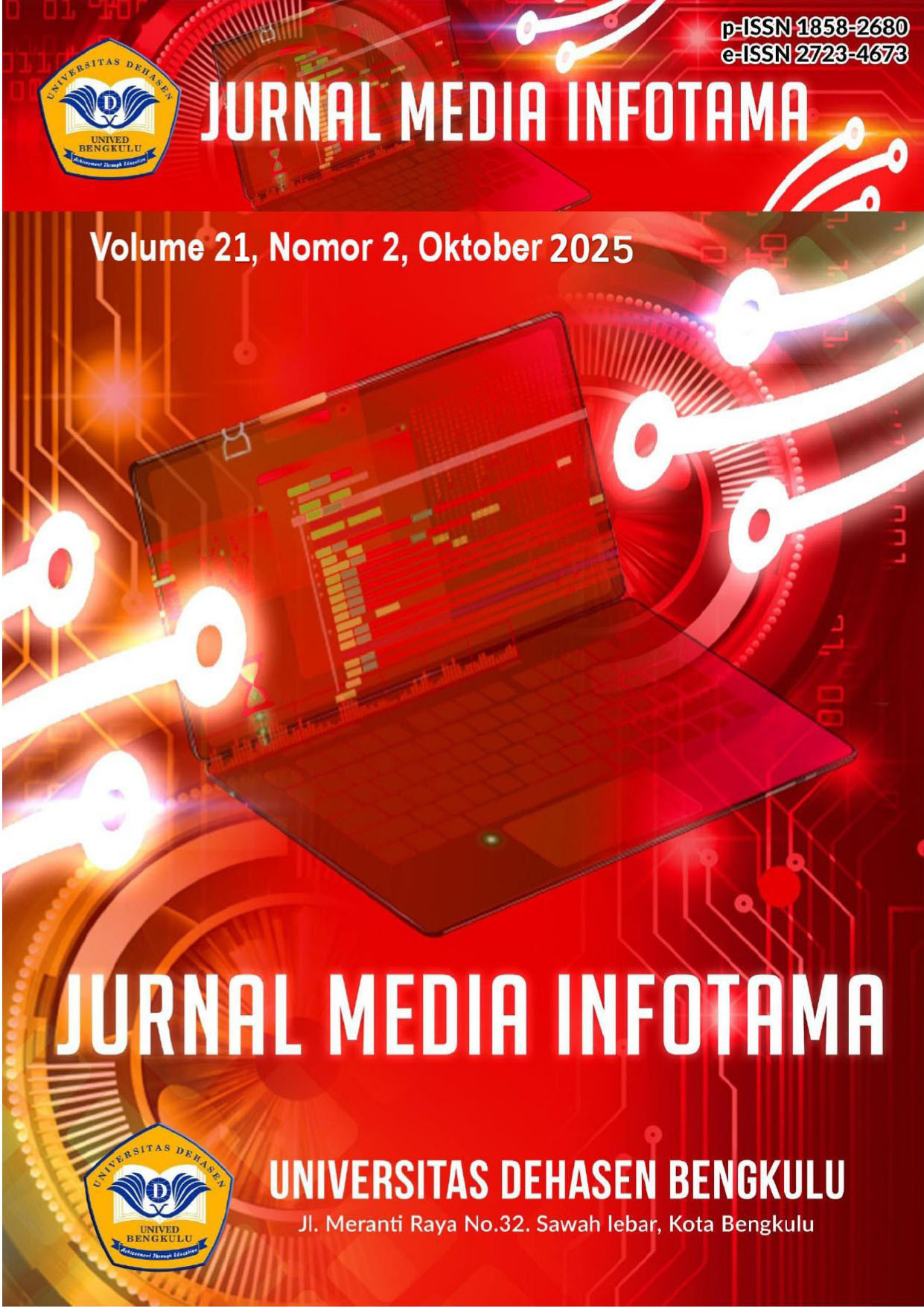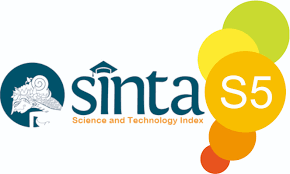Analisis Kinerja Jaringan Wireless Di Poltekkes Kemenkes Bengkulu
Abstract
Poltekkes Kemenkes Bengkulu, as a higher education institution in the health sector, requires fast, stable, and secure internet access to support various academic activities such as e-learning, research, and campus administration. Students and lecturers heavily rely on the wireless network to access digital resources, conduct online communication, and manage academic information. The current wireless network infrastructure at Poltekkes Kemenkes Bengkulu consists of 37 Ruijie brand Access Points (APs) distributed across the campus buildings. All APs operate on 2.4 GHz and 5 GHz frequencies and use IEEE 802.11ac/n standards to support high-bandwidth needs. These APs are utilized for academic learning activities, accessing academic resources, and administrative services for students, lecturers, and academic staff. The quality of the wireless network at Poltekkes Kemenkes Bengkulu is considered excellent, with high download and upload speeds indicating the network's capability to handle bandwidth-intensive internet activities. A ping value below 20 ms demonstrates very low latency, allowing for fast and real-time data communication. Based on the analysis using the Quality of Service (QoS) method, the results show that the wireless network performance at Poltekkes Kemenkes Bengkulu is highly satisfactory in terms of packet loss, delay, jitter, and throughput
Downloads
References
[2] Antariksa, M. D. S., & Aranta, A. (2022). Analisis Jaringan Komputer Local Area Network (LAN) Di Rumah Sakit UNRAM. Jurnal Begawe Teknologi Informasi (JBegaTI), 3(2).
[3] Ardhana, V. Y. P. (2021). Analisa Quality of Service (QoS) Jaringan Internet di SMP Al Mutmainnah. SainsTech Innovation Journal, 4(2), 139-143.
[4] Danuasmo, S., Nazuarsyah, N., & Ginting, R. B. (2023). Rancang Bangun Jaringan Wireless Lan Dan Internet Berbasis Cloud Pada Universitas Bina Bangsa Getsempena. Cyberspace: Jurnal Pendidikan Teknologi Informasi, 7(1), 15-24.
[5] Gathan, A. F. (2023). Optimalisasi Penggunaan Bandwidth Jaringan Dengan Metode Queue Tree Menggunakan Mikrotik Router Pada Diskominfo Belitung (Doctoral dissertation, Universitas Komputer Indonesia).
[6] Hasbi, M., & Saputra, N. R. (2022). Analisis Quality of Service (Qos) Jaringan Internet Kantor Pusat King Bukopin Dengan Menggunakan Wireshark. Just IT: Jurnal Sistem Informasi, Teknologi Informasi dan Komputer, 12(1).
[7] Nababan, A. J. N., & Lasut, D. (2024). ANALISIS KUALITAS JARINGAN INTERNET BERBASIS WIRELESS LAN MENGGUNAKAN METODE QOS (QUALITY OF SERVICE) PADA BJ’S COFFEE. ALGOR, 6(1), 34-43.
[8] Nurrobi, I., Kusnadi, K., & Adam, R. (2020). Penerapan Metode QoS (Quality of Service) untuk Menganalisa Kualitas Kinerja Jaringan Wireless. Jurnal Digit: Digital of Information Technology, 10(1), 47-58.
[9] Pristiandi, L., & Rosmiati, R. (2023). Analisis dan Desain Jaringan Wireless pada SMAN 1 Tanah Siang Selatan Menggunakan Wireshark dan Cisco Packet Tracer. Jurnal Sistem Informasi, Manajemen dan Teknologi Informasi, 1(1), 72-80.
[10] Saputra, E. P., Saryoko, A., Maulidah, M., Hidayati, N., & Dalis, S. (2023). Analisis Quality of Service (QoS) Performa Jaringan Internet Wireless LAN PT. Bhineka Swadaya Pertama. EVOLUSI: Jurnal Sains dan Manajemen, 11(1).
[11] Syahib, M. I., Aksara, L. F., & Aksara, L. B. ANALISIS KINERJA LAYANANJARINGAN INTERNET WIRELESS LAN MENGGUNAKAN METODE QUALITY OF SERVICE (STUDI KASUS: JURUSAN TEKNIK INFORMATIKA UHO).
Copyright (c) 2025 Anggita Gledisyah Putri, Khairil Khairil; Abdussalam Al Akbar

This work is licensed under a Creative Commons Attribution-ShareAlike 4.0 International License.
An author who publishes in Jurnal Media Infotama agrees to the following terms:The author holds the copyright and grants the journal the right of first publication of the work simultaneously licensed under the Creative Commons Attribution-Share Alike 4.0 License which allows others to share the work with acknowledgment of the work's authorship and initial publication in this journal.Submission of a manuscript implies that the submitted work has not been previously published (except as part of a thesis or report, or abstract); that it is not being considered for publication elsewhere; that its publication has been approved by all co-authors. If and when a manuscript is accepted for publication, the author retains the copyright and retains the publishing rights without limitation.
For new inventions, authors are advised to administer the patent before publication. The license type is CC-BY-SA 4.0.
MEDIA INFORMATION REVIEW: Journal of the Faculty of Computer Science is licensed under a Creative Commons Attribution-ShareAlike 4.0 International License.You are free to:Share
— copy and redistribute material in any medium or formatAdapt
— remix, modify and develop materialfor any purpose, even commercial.
The licensor cannot revoke this freedom as long as you follow the license terms












.png)


